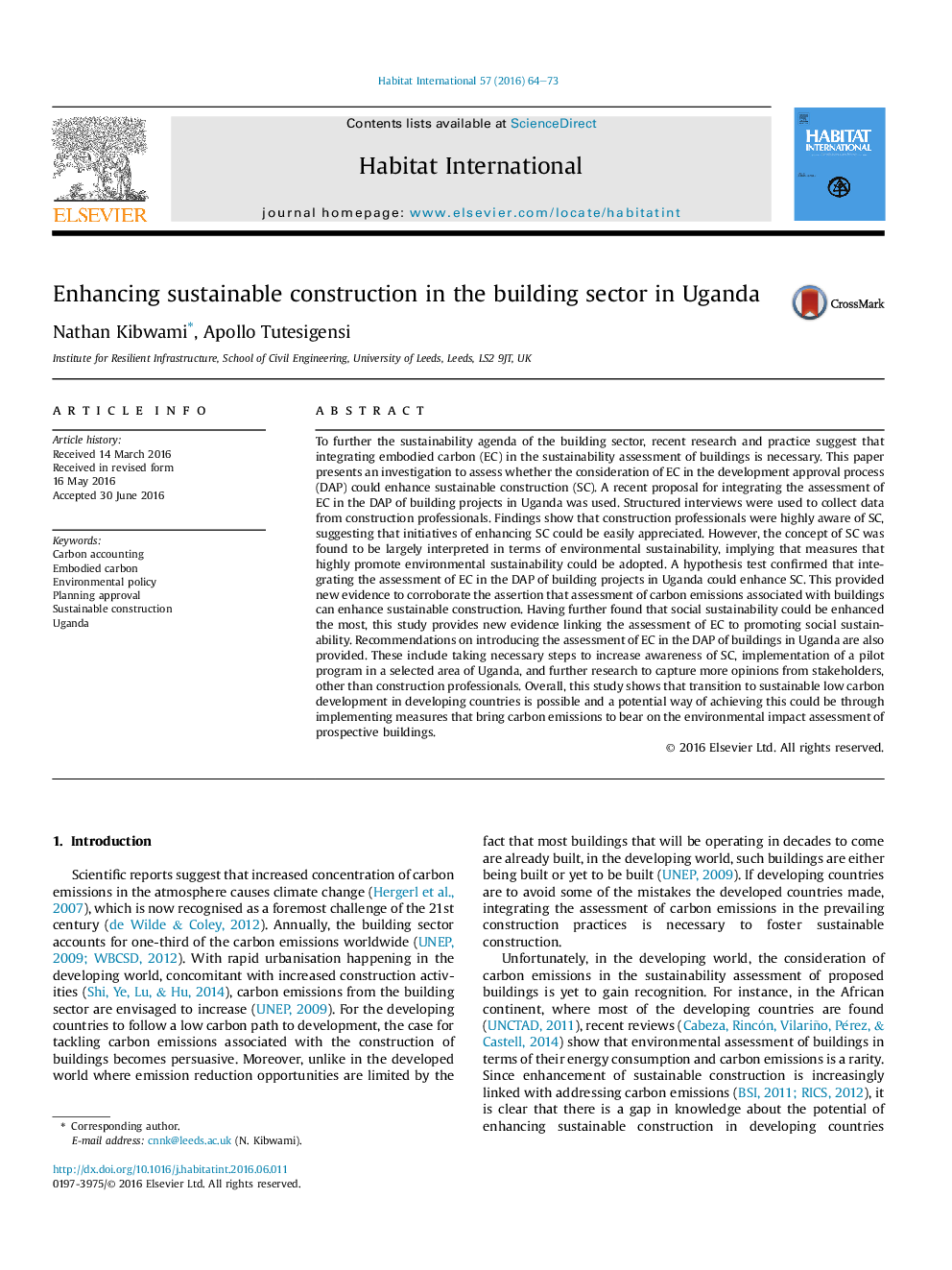| Article ID | Journal | Published Year | Pages | File Type |
|---|---|---|---|---|
| 1047634 | Habitat International | 2016 | 10 Pages |
•Awareness of sustainable construction by Ugandan construction professionals is high.•Sustainable construction in Uganda mainly relates to environmental sustainability.•Accounting for embodied carbon can promote grasp of social sustainability in Uganda.•Accounting for embodied carbon can enhance sustainable construction in Uganda.•Accounting for embodied carbon could facilitate transition to low carbon urbanisation.
To further the sustainability agenda of the building sector, recent research and practice suggest that integrating embodied carbon (EC) in the sustainability assessment of buildings is necessary. This paper presents an investigation to assess whether the consideration of EC in the development approval process (DAP) could enhance sustainable construction (SC). A recent proposal for integrating the assessment of EC in the DAP of building projects in Uganda was used. Structured interviews were used to collect data from construction professionals. Findings show that construction professionals were highly aware of SC, suggesting that initiatives of enhancing SC could be easily appreciated. However, the concept of SC was found to be largely interpreted in terms of environmental sustainability, implying that measures that highly promote environmental sustainability could be adopted. A hypothesis test confirmed that integrating the assessment of EC in the DAP of building projects in Uganda could enhance SC. This provided new evidence to corroborate the assertion that assessment of carbon emissions associated with buildings can enhance sustainable construction. Having further found that social sustainability could be enhanced the most, this study provides new evidence linking the assessment of EC to promoting social sustainability. Recommendations on introducing the assessment of EC in the DAP of buildings in Uganda are also provided. These include taking necessary steps to increase awareness of SC, implementation of a pilot program in a selected area of Uganda, and further research to capture more opinions from stakeholders, other than construction professionals. Overall, this study shows that transition to sustainable low carbon development in developing countries is possible and a potential way of achieving this could be through implementing measures that bring carbon emissions to bear on the environmental impact assessment of prospective buildings.
